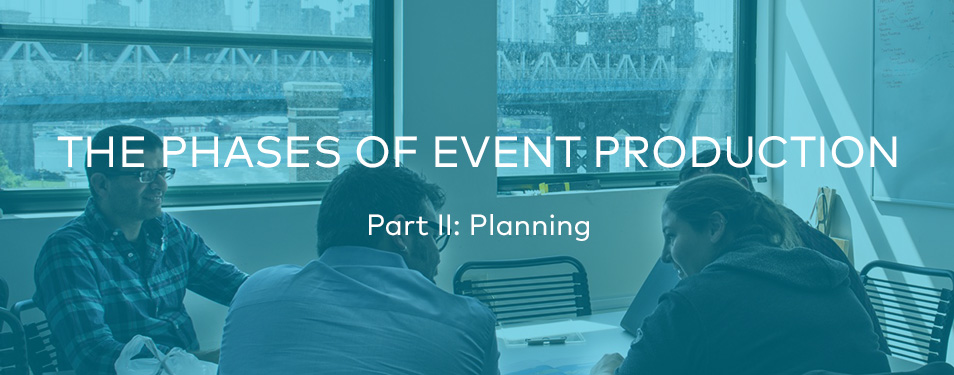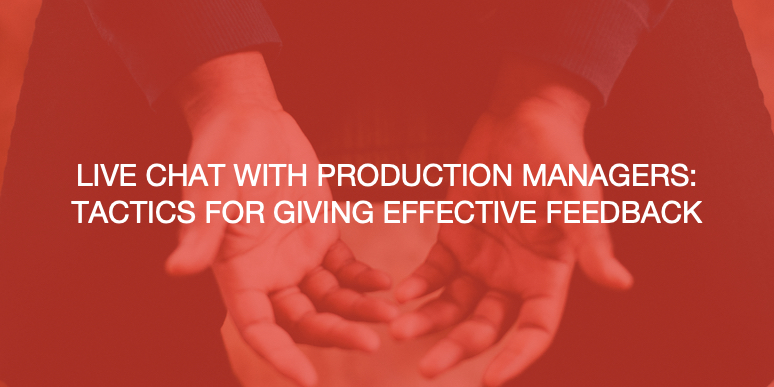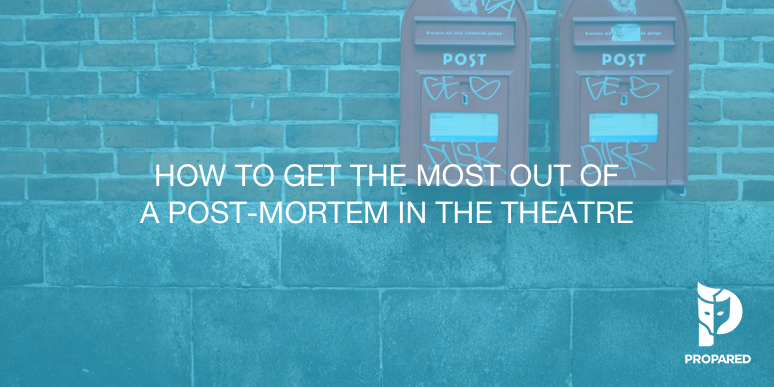
This is part 2 in a series about the phases of event production.
You’ve completed your due diligence and your investigation. Now it’s time for for the real work to begin! Pre-production, event planning, tech: whatever you want to call it, this part of the process is the real meat and potatoes of planning an event. Your checklist for this phase will often be very detailed. This is, after all, the time to identify your needs (labor, gear, etc.) and determine where you are going to source them from. It’s also the primary opportunity to address any concerns or changes coming from the client. The closer you get to the day of the event, the harder it becomes to make big changes. I like to break down pre-production into 3 major steps.
1. Contracts
A lot of people like to think about contracts as part of the Investigation phase. That’s totally fine. The reason I include it as part of this phase is commitment. As far as I’m concerned, when I’m doing my investigative work, I’m scoping the project. What’s the end result? That I may or may not take on the project. I have not committed myself or my team to any job during the first phase. Once contracts are prepared, that is my way of looking my client in the eye and committing to the work I’ve said I can do. Sure, the client may still back out at this juncture. But I don’t draw up contracts until I’m satisfied that I can produce a killer event.
Contracts always sound scary but in reality they’re quite simple. Beyond the legalese, a contract is really just a written agreement designed to prevent communication problems and back you up in case of a dispute. There are lots of downloadable contract templates you could use as a starting point but an agreement could be only a sentence or two in length. If you are drafting your first contract, it is always a good idea to have legal counsel help you or look it over. Here are some of the most basic parts of event production contracts.
-
Consideration
A general statement of what the service or product provider (you) is expected to do for the buyer (the client). It also includes whether other parties are expected to complete aspects of the project (third parties, subcontractors, vendors, etc.).
-
Terms/Offer
Details exactly what is expected from the company doing the work, and what is expected from the buyer. Also, pricing, payment requirements, duration of the contract, or what is being exchanged for this work.
-
Acceptance
This is a place for signatures and dates, or statements of understanding.
We hear horror stories all the time about freelancers and companies not getting paid or being asked to do things that are outside of the “job description” or “scope of the project.” If there’s no contract, you have very little recourse. This is a critical step, don’t miss it.
2. Pre-Production
Now that its legal, it’s time to get your hands dirty. As I mentioned before, this is the phase where the bulk of the work on a production or event takes place. This is also the part that is for the most part, never seen by the client or the attendees. But trust me, if you’ve skimped on anything in pre-production, they will notice. Your client will hear about it first and then believe me, you’ll hear about it from the client later. In colorful language. Use this period to get all the event logistics figured out. Ask all of the questions that need to be asked so you can make all of the plans that answer those questions. If you have an outdoor event, make sure you schedule out a weather plan in complete detail. You know you’re on the right track when you ask yourself, “Do I need this” rather than, “Wait, what do I need?”
The goal of pre-production is to have done everything you can before you are on-site. If it can be done in advance, do it. This way, when you do arrive on-site for the event, you are ready to tackle new problems that have crept up. Do a second site survey if necessary. If you find yourself kicking certain cans down the road by saying, “We’ll just figure that out on-site,” you are setting yourself up for costly errors and safety mishaps. And you are only increasing the possibility of needing to scramble last minute. Here are some specifics worth noting.
-
Building order
In what order do set pieces need to be built? This often takes into consideration nuances of each department. Audio will need some quiet time to sound check. Lighting will need the space to be dark at some point to properly focus the lights. Power has to be run before you can turn anything on and rigging has to be finished before you can hang anything. Make sure you design a schedule that maximizes the time your team has. Otherwise, you’ve got a bunch of folks sitting around with nothing to do. This looks bad on you and the event.
-
Not every minute should be active work time
Set a room ready time that allows you some wiggle room so you aren’t working up until the very last minute. Remember to schedule in time for breaks and meals too as these are critical to making sure everyone is able to work at peak performance.
-
Strike/Load-out needs a schedule in advance
Because this work begins so quickly after the start of the event, make sure to plan it out in detail beforehand. Most accidents happen during strike because they are often not fully planned. The crew can be tired and trying to finish quickly so they can get home.
-
Visualize and Map
As the event manager, you need to know every step of everyone else’s job from the first to the very last. I often use visualization as a helpful tool no matter the department i’m running. Use mapping or scheduling tools that easily allow you to see what should be happening and when. You don’t have to keep it all in your head.
3. Shop Prep & Paper Prep
After most of your work here is complete, you’ll need to button it all up so you are ready for the big day. Events move so fast that I find a shop prep to be an incredible tool to maintain efficiency. It allows you to label equipment and group and sort things for easy identification. This is especially helpful if you are producing an event in multiple spaces or meeting rooms, each of which have their own equipment list. Assemble as much as you can ahead of time and then, turn things on to make sure they work! When ready, label, sort, pack, and load the truck. Shop Prep is your last chance to get hands on the aspects of your production. It’s is also your opportunity to design how things will show up on-site. For example, if the first thing you need out of the truck is rigging gear, don’t load it on first!
The same goes for Paper Prep. Take the time to get your paperwork in order. If there are multiple rooms, print out floor plans for each to distribute to your team. Create signs, lists, or role descriptions for team members that will show up on the day of the show. Make sure you have contingency plans for everyone, new hire paperwork, time sheets, and sign-in sheets. Can’t you already feel how much time you are going to save come load-in?
You are now ready for the big day! Now that you’ve signed your contracts, executed your pre-production to perfection, and organized your gear, it’s time to get some sleep. Tomorrow is going to be a long day on-site!
How did we do? Are there any steps you find crucial tthat we may have missed? Let us know in the comments below.



